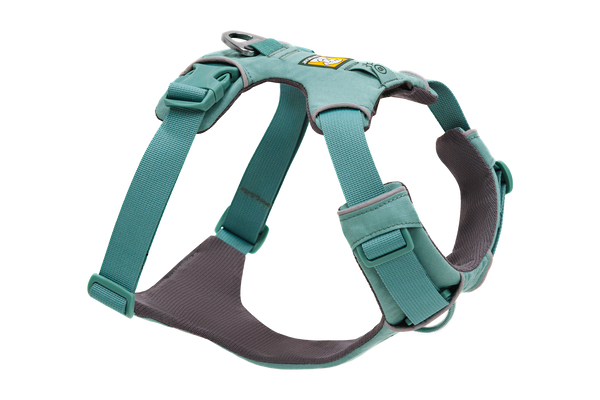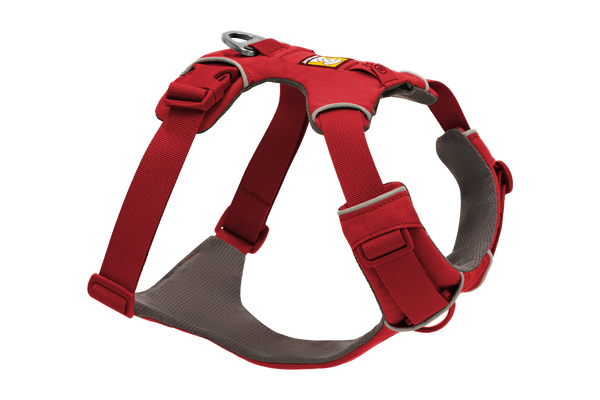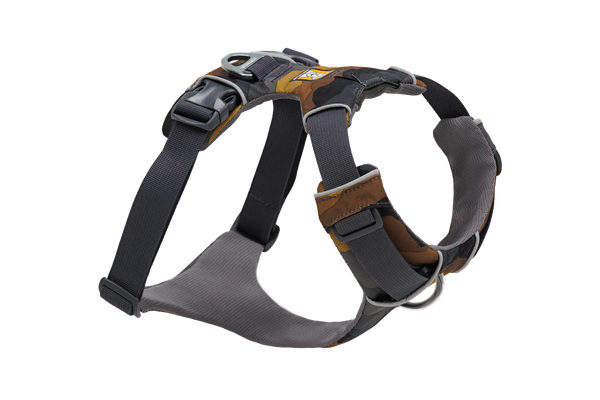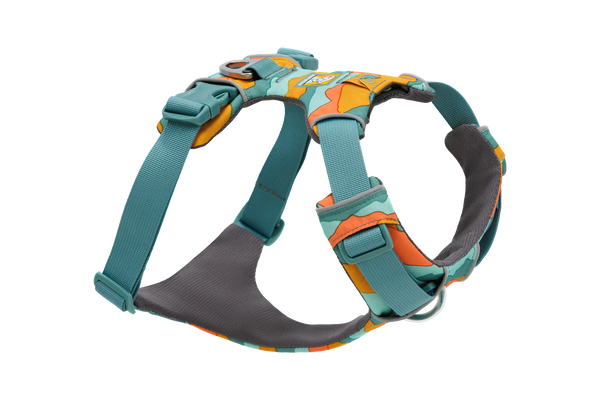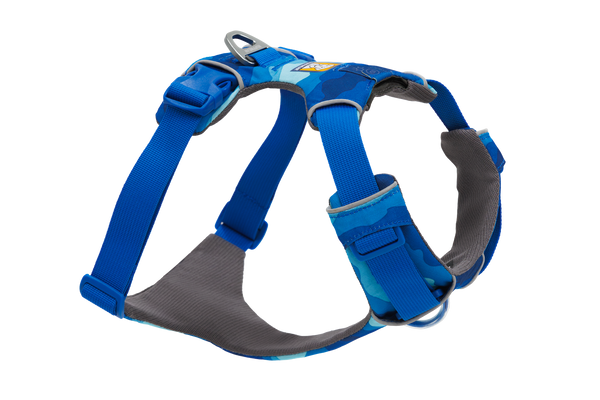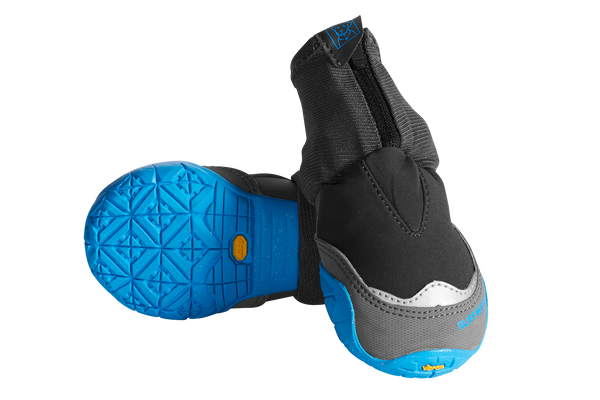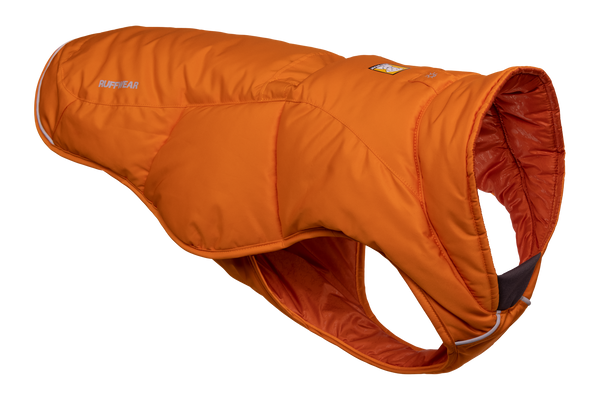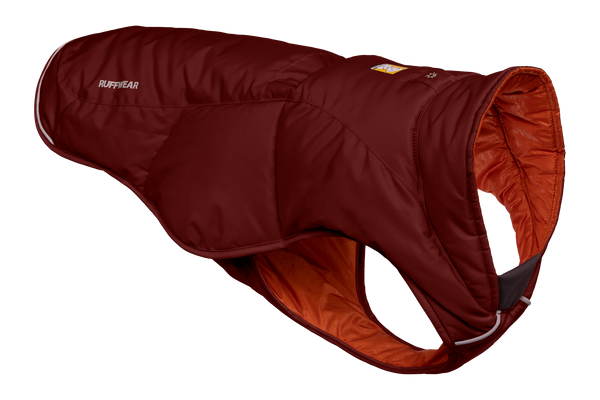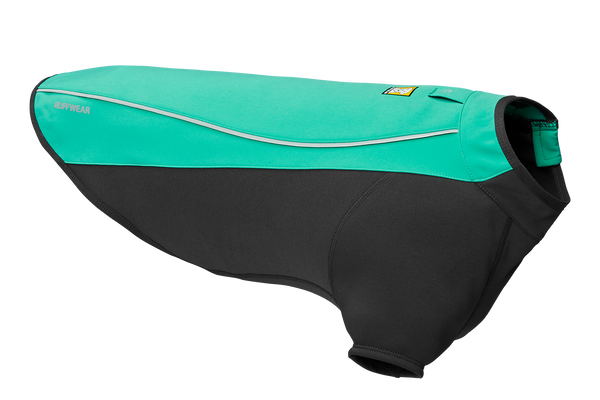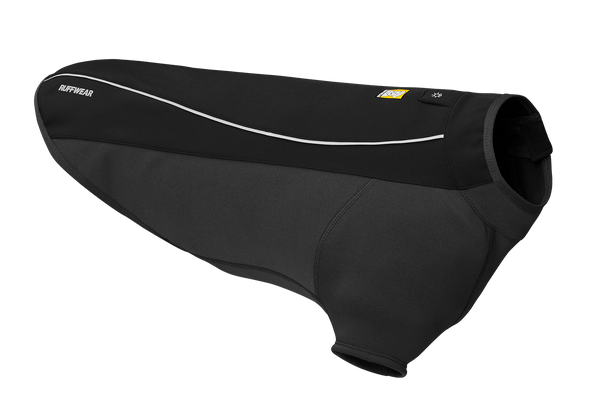What's the Difference Between Waterproof & Water-Resistant?
Whether you and your canine companion are scrambling the snowy backcountry or heading out for a rainy walk, having gear that won’t get soaked when it touches water is key to keeping the adventure going. Depending on the conditions you plan on exploring in, you might be wondering if your pup needs waterproof or water-resistant gear — terms that appear often in the world of outdoor gear for both dogs and humans.
While it may not seem like there’s a big difference, there is, and choosing the right one can make or break your excursion. As we all know, dogs are really good at getting wet, muddy, and dirty. Thankfully, we design gear for all these conditions.
So what exactly is the difference between "waterproof" and "water-resistant"? We put together a quick rundown of the performance you can expect from each and in which of our dog gear you'll find them.
Waterproof vs Water-Resistant
When it comes to dog gear, understanding the difference between waterproof and water-resistant is crucial to making the most of your outdoor adventures. While both terms suggest protection from the elements, there's a key distinction.
Waterproof gear is designed to completely block out moisture, making it ideal for heavy rain, snow, or swimming. Water-resistant gear offers partial protection from the elements. It can repel light rain or moisture, but may not be fully impervious to heavy downpours.
Now let’s get into the nitty gritty details.
Waterproof
For the most part, waterproof means no water in, no water out. To be entirely waterproof, the surface must be completely impervious to water and provide a high level of sustained water protection during harsh conditions and extended exposure.

The water column test is a standard test used across many industries to measure how waterproof a piece of fabric is. You'll notice it in the outdoor industry as a measurement of weather performance for things like outerwear and tents.
The fabric being tested is placed at one end of a tall tube that's 1 inch in diameter. The tube is filled with water, and the height of the water in the tube when the fabric begins to leak becomes the rating, expressed in millimeters of water.
The taller the column of water before the fabric leaks, the more waterproof the material (e.g. 10,000 mm fabric is more waterproof than 3,000 mm fabric).
For a point of reference: Wind-driven rain comes down with a force equal to the pressure of about 1,400 mm. A 1,000 mm - 5,000 mm rating performs well in moderate rain, and 5,000 mm - 10,000 mm is generally considered waterproof unless subjected to considerable pressure (great for serious downpours or constant rain exposure).

Our Sun Shower™ Raincoat (2,000 mm) and Vert™ Jacket (10,000 mm) are both waterproof options to keep your dog dry in wet conditions. No water can get in through the fabric, seams, or flaps because not only is the fabric waterproof, but the seams are sealed and buckles are covered.

Certain waterproof fabrics are sometimes described as breathable. They help regulate heat and release moisture, performing particularly well with high-energy activities. Our Cloud Chaser™ Jacket features a breathable, waterproof (rated at 10,000 mm) softshell upper panel. A similar material can be found in our Polar Trex™ Dog Boots.

Water-Resistant
Water-resistant fabric, also referred to as “water repellant”, is coated with a finish such as DWR (Durable Water Repellent). It's resistant but not impervious to penetration by water. Sometimes stated as "weather-resistant," these fabrics will often bead up rainwater or snow as it melts, forming drops on the surface. You get protection from limited precipitation, but water will eventually saturate the fabric with extended exposure.
We often use DWR finishes on our insulated apparel because it helps keep insulation dry – which in turn helps keep dogs warm. Jackets like the Powder Hound™, Quinzee™, Stumptown™, and Overcoat™ are all water-resistant and can shed light amounts of snow, water, or mud.

Our Apparel Comparison Page shows a high-level, side-by-side comparison of how each of our jackets stack up in the waterproof category. It's a great resource for helping you head down the right path as you look for a jacket for your furry trail companion.
Shop for waterproof and weather-resistant gear at ruffwear.com, and share your stories with us on Instagram, Facebook, and Twitter. If you have any questions, feedback or ideas, please don’t hesitate to bark.



